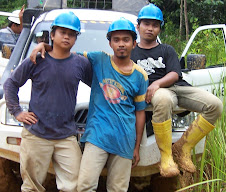It is a kind of limestone that was transformed by heat and pressure (of overlaying rocks)
Serpentine = Mg3[(OH)4/Si2O3]
It belongs to the group of silicates
Soapstone = Mg3[(OH)2/Si4O10]
It belongs - as serpentine - to the silicate group. It is the same as talcum.
Serpentine is the result of long time alteration of igneous rocks under pressure (tectonic activity) and temperature. It's very difficult to distinguish minerals in this rocks, but they have a fybrous texture.
An eclogite is an entirely metamorphic rock, formed under very high levels of pressure & and temperature in special geologic places (the Alps, for example). They look like granite but, you know, they are green (because of the pyroxene) and have garnet (a red equi-dimensional mineral). Even if it is weathered you can distinguish its texture.
About jade, it is a mineral more than a rock. But a rock rich in jade looks like a green glassy mass. Sometimes its associated with eclogites.
Serpentine is a hydrated Magnesium Silicate, similar in chemical composition to asbestos (but not quite as dangerous). Rare, but can be found in areas of hydrothermal activity (minerals in solution forced through the rock by subterranean heating, e.g. igneous intrusions), and usually is found as veins in the rock.
Serpentine can occur in many colours, but the most prized is green. Its delicate colour variations have made it popular over the years. It is easily worked with hand tools. Like the Blue John in Derbyshire, Serpentine is also capable of being worked on a lathe. Some people like to fashion bowls or vases to show off the translucence of the mineral. It is soft (h4), easily carved, but often flawed, and has a greasy texture that takes a polish well.
Good Cornish Serpentine is difficult get hold of. There are some exposures on public places, but these are well worked. Most seams are privately owned.
Alabaster is normally Gypsum - a hydrated Calcium Sulphate, (but in the past a certain kind of limestone was also referred to as Alabaster).
Gypsum is a very soft mineral (h2) - you can scratch it with your fingernail, dissolves in water, affected by temperature, therefore best for indoor sculpture.
Formed in sedimentary rocks. The mineral is often disseminated in a mudstone, but can migrate into cavities forming nodules, bands and crystals. Sometimes very large seams are found.
Much more translucent, or even transparent, than Serpentine. Colour - usually white, but varies with impurities (often iron) - yellow, red, brown. Often associated with the weathering of sulphide ores, or salt deposits. Widespread geographically and in time. In UK it is common in Permian-Triassic, Jurassic and Cretaceous periods. However, finding really big pieces for large scale carving is not so easy.
Serpentine and Alabaster had their hey-day in C19th.
How Alabaster is formed and what causes different shades of colouration from red through yellow to green? Plus - what period of geological time was Alabaster formed in? Was it during the Jurassic period?
Serpentines are so nasty rocks. They are the result of alteration under pressure and temperature of originally basalts or gabros, ussually with the presence of water. So they turn into greenish masses with fybrous texture. Their chemical composition is similar to
basalts or gabros: 45 -50% of SiO2, low content of K and Na, high content of Fe, Mg, and Mn; all these form far, of course.
About alabaster, it is just a variety of gypsum. All these rocks are formed by deposition of CaSO4 solved in salty water from lakes or sea, that evaporate. Layers of gypsum can be so old, even older than Jurassic (as you said), or be so young that formed just yesterday.
The alabaster that sculptors use comes from big and old layers... maybe Jurassic layers from Canada or USA.
The differences in colouration are the result of deposition conditions. Different colors mean different elements (as F, Cu, Zn, Cr, Ti, Mg) present inside the alabaster.
Writed by yangxp

Tidak ada komentar:
Posting Komentar